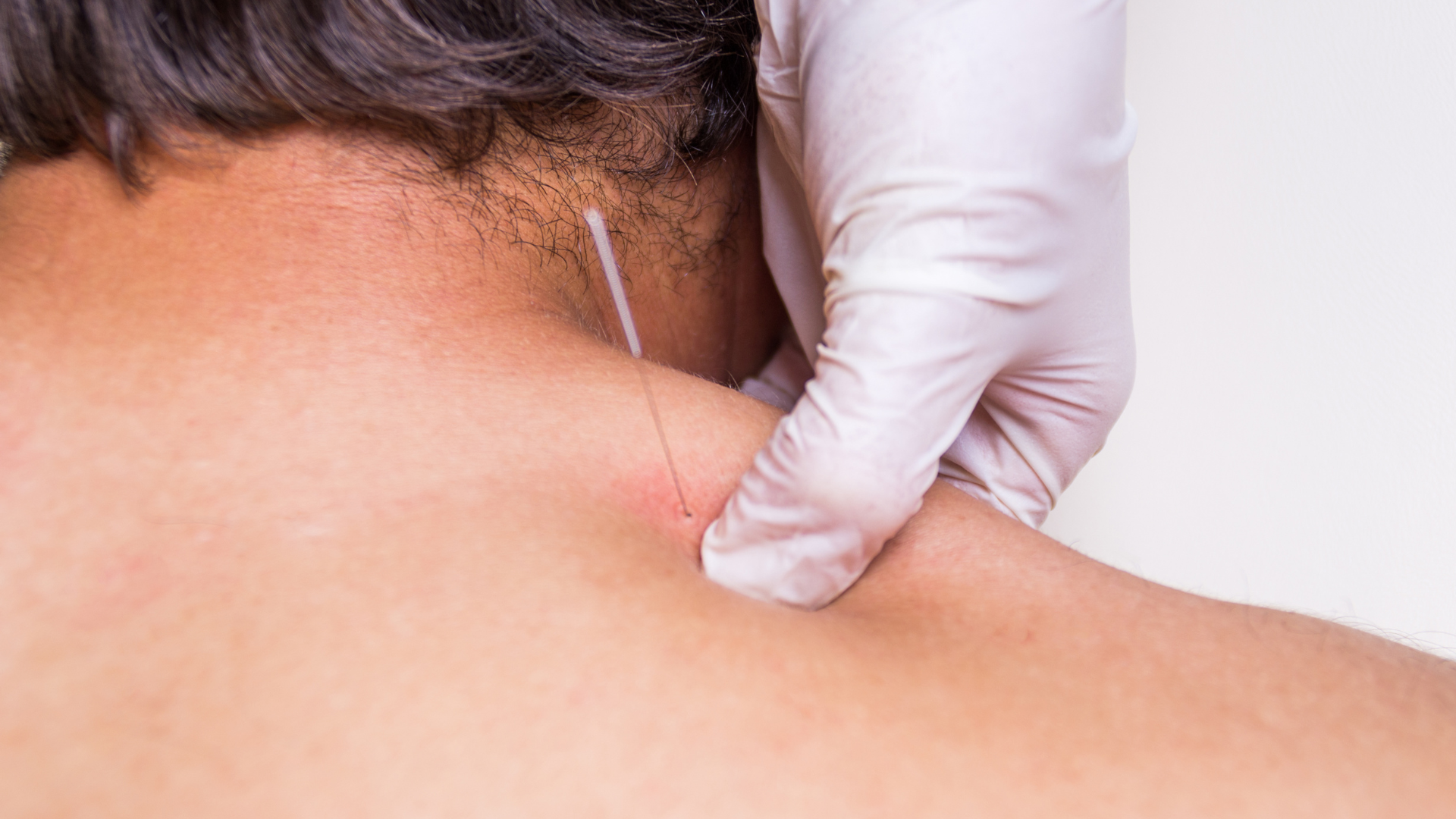Dry needling is a procedure that can be performed by licensed physical therapists in Michigan as part of a treatment plan to reduce pain, improve mobility, and relieve muscle tension. While often confused with acupuncture, dry needling is not the same. Acupuncture is rooted in traditional Chinese medicine. Whereas dry needling is based on modern Western medicine and focuses on targeting trigger points and muscle dysfunctions.
Physical therapists undergo extensive training in human anatomy and movement assessment, and they must complete additional certifications beyond their formal education to safely and effectively perform dry needling.
Conditions Treated with Dry Needling
Dry needling can be beneficial for a variety of conditions, including:
✔️ Pain relief (acute and chronic)
✔️ Trigger points & muscle tension
✔️ Tendonitis & arthritis
✔️ Sinus drainage issues
If you’re unsure whether dry needling is right for you, consult with your physical therapist.

Potential Side Effects & Contraindications
Dry needling is generally safe with minimal side effects. Some side effects may include mild soreness (lasting 48-72 hours), slight bleeding, skin bruising, and temporary fatigue. However, contraindications include:
- Bleeding disorders
- Compromised immune systems
- Vascular disease
- Recent surgical procedures
If you’re uncertain whether you’re a candidate, consult your medical provider before starting treatment. At Midland Sports Rehab, our expert Physical Therapists are the best in the Tri-Cities area and know when and how to safely treat with dry needling.
What to Expect During Trigger Points Treatment
A dry needling session typically lasts 10-20 minutes, depending on the treatment area. The physical therapist carefully selects the needle’s size, length, and placement based on the targeted region.
Physical therapists may use different techniques, including:
🔹 Piston technique (quick in-and-out motion)
🔹 Needle winding (twisting to engage muscle fibers)
🔹 Periosteal pecking (targeting bone membrane)
🔹 Electrical stimulation (attaching electrodes to needles for enhanced effects)
There is no single “correct” method—techniques vary based on the provider’s training and the patient’s needs.

Post-Treatment Care & When to Seek Help
After dry needling, hydration is key to recovery. Muscle soreness is common, and applying heat or taking a warm shower can help relax the muscles and reduce tightness.
⚠️ Seek medical attention immediately if you experience:
- Excessive bleeding
- Shortness of breath
- Severe or unusual side effects
Most patients require 3-4 sessions before noticing significant improvement. Lack of progress could indicate an incorrect diagnosis. An orthopedic consultation may be necessary to determine if further intervention, such as surgery, is required.
If you are interested in dry needling, pt therapy, or sports therapy at pt clinics near you, visit Midland Sports Rehab! Our Physical Therapists are experts in their field and specialize in patient care. Book an appointment with us today!
